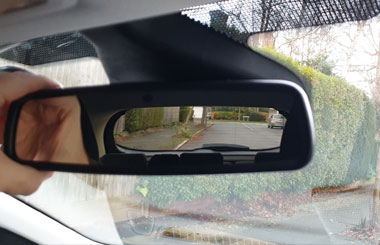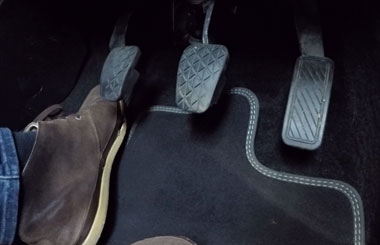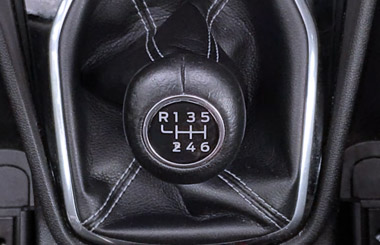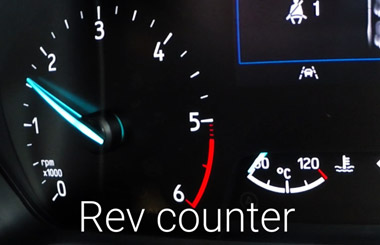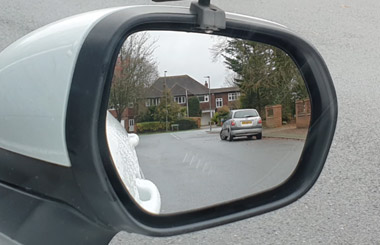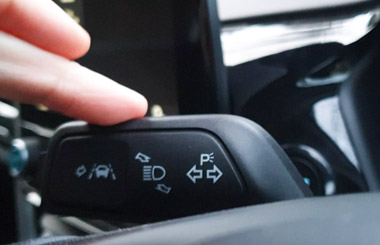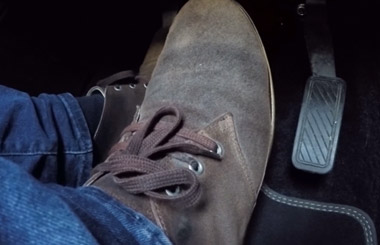How to move off and stop.
1. Press the clutch fully down (pedal on the left) and select 1st gear. Whenever you need to change gear, always fully press the clutch down to the floor.
To select 1st, you need to follow this diagram on top of the gear lever.
The letter 'R' is for reverse gear and it can be in a different place depending on the car. To select reverse you sometimes have to lift a metal collar. Memorise this diagram in your car and remember where the gears are positioned because it's distracting to look down at it while you're driving.
At the moment it's in neutral which means it's not in any gear. To select 1st gear, push it to the left and then forward to 1st.
2. You now need to set the gas (pedal on the right). It's a sensitive pedal and you only need to press it slightly about the thickness of a pound coin to get the revs between 1 and 1 and a half but you don't need to be precise (the rev counter is shown in the image). You might overdo it at first but you'll get used to it and it doesn't have to be precise. This will help the car move off without stalling. You would need to give it a bit more gas if you was moving off uphill or no gas if you're moving off downhill. You will get used to the sound of the engine which means that you won't have to look at the rev counter.
3. Now slowly raise the clutch to the biting point. You know when you've found the biting point as you'll feel the back of the car dip slightly, the front raises slightly too and the engine sound changes then keep your foot still.
The first part of raising the clutch doesn't do anything but then you'll feel the back dip a little. The biting point is the car wanting to go forward and the only thing holding it back is the parking brake.
You can get different amounts of biting point. If you raise the clutch more, then the car will really want to go a bit too much and it can overpower the parking brake, move off quickly or stall.
You only want to feel the back of the car dip a little. Lower the clutch down slightly if it does try and move off too much or push the clutch all the way down and start again for the practise.
When you feel the biting point, you can rest the heel of your foot on the floor as it can help you have more control.
Get used to where the biting point is in your car as it can vary from car to car.
Is it safe to move off?
1. It's important to make sure it's safe before moving off by checking all the mirrors and blind spot over your right shoulder.
2. Signal if it would benefit anyone.
3. Keep your feet still. If it's safe to move off then release the parking brake. You won't be able to release the parking brake just by pressing the button. Instead pull the parking brake up slightly and press the button at the same time. Fully lower the parking brake down, then let go of the button.
The car should now start moving forward. It's important to keep your feet still for a couple of seconds as the car begins to move until you're moving faster than a walking pace and then slowly raise the clutch with a little more gas. The car could stall if you raise the clutch too soon.
If it's unsafe to go and you have to wait then don't hold the biting point unnecessarily as you don't want to increase wear on the clutch. Instead, come off the gas pedal and press the clutch back down.
4. You can release the gas pedal to slow down or press it slightly to increase speed. The gas pedal is so sensitive.
Pressing the footbrake will also slow the car down.
|


